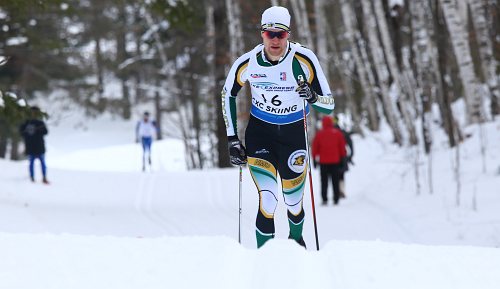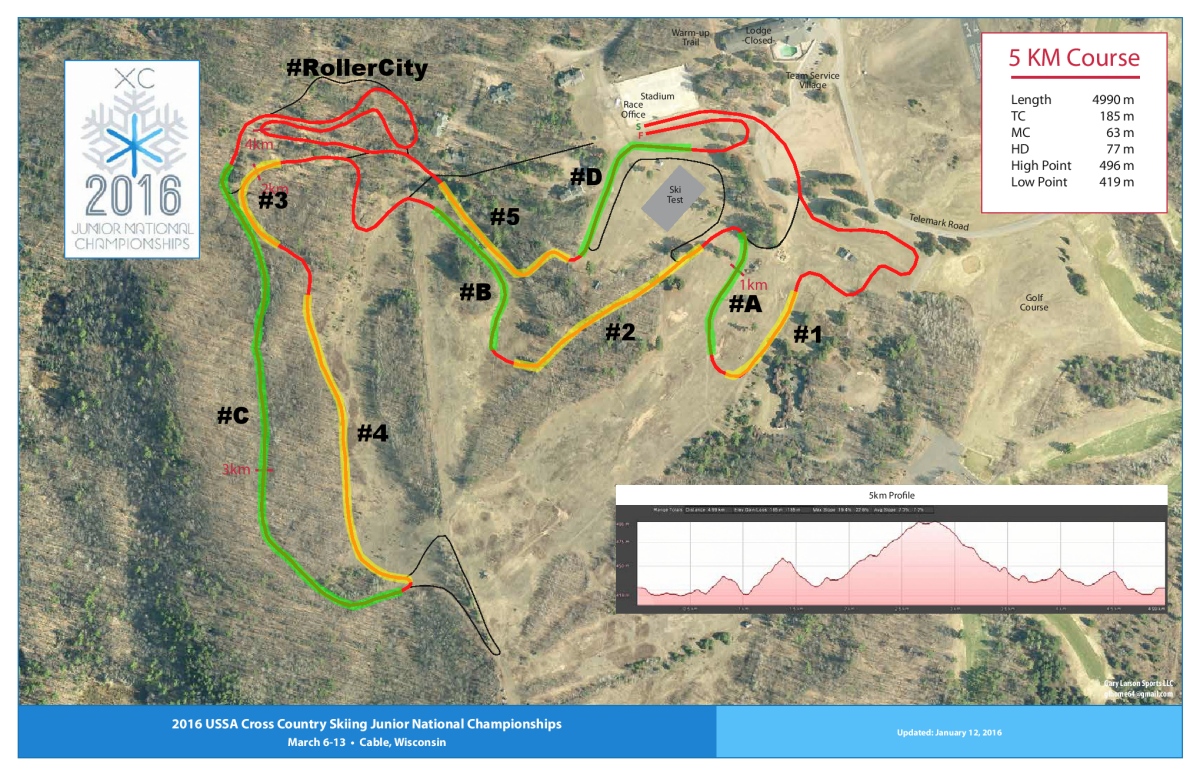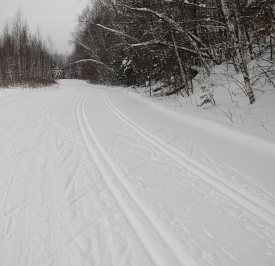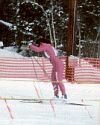Junior Nationals Preview
March 2, 2016 For the first time since 2011, Junior Nationals returns to the Midwest! Hard to believe it was only 5 years ago that Minnesota's own Jessie Diggins was racing in her final Junior Olympics, foreshadowing of great things to come with a dominating set of races on the trails at Theodore Wirth (event coverage recap).
For the first time since 2011, Junior Nationals returns to the Midwest! Hard to believe it was only 5 years ago that Minnesota's own Jessie Diggins was racing in her final Junior Olympics, foreshadowing of great things to come with a dominating set of races on the trails at Theodore Wirth (event coverage recap).
Perhaps the biggest story looming over Midwest Junior Nationals is the unfortunate timing of warm weather. After a toasty 2015 Junior Nationals in Truckee, CA, it appears another heat wave will roll in just in time for JNs. However, this year there is a healthy base of snow at Telemark (though you wouldn't guess that if you fly into Minneapolis), and organizers have been busy all week generating more man-made snow and shoring up the course. As of Wednesday evening, organizers were still planning on full courses for all the events, as scheduled. And as many skiers will attest, much of the US has been skiing in warm conditions this season -- they're (unfortunately) well trained for these conditions.
Location
The 2016 Junior Nationals are being held in Cable, Wisconsin, on the grounds of the hallowed Telemark Resort. While the resort has been closed for a number of years now, Central Cross Country Ski Association (CXC) has worked hard to maintain and further develop the associated Telemark trail system.
Cable may be a very small town, but it has some of the best restaurants in the area. And just down the road is the "metropolis" of Hayward. For out of towners, some of the favorite places to eat include Rivers Eatery, Coops Pizza, and Norse Nook.
Events
The primary events of Junior Nationals are, of course, the races. This year's event follows an almost identical format for the 2014 Junior Nationals at Stowe, VT.
Monday, March 7th - Classical Races (interval start)
- 5K for U16 boys/girls, U18/U20 girls
- 10K for U18/U20 boys
- Course Map
Wednesday, March 9th - Classical Sprints (qualifying, heats)
- Sprint qualifiers
- Sprint heats
- Course Map
Friday, March 11th - Freestyle Races (mass start)
- 5K for U16 boys/girls
- 10K for U18 boys, U18/U20 girls
- 15K for U20 boys
- Course Map
Saturday, March 12th - Freestyle Relays (mass start)
- 3.3K x 3 for all divisions
- Course Map
View the full event schedule
Besides the races, there are a number of fun social gatherings for parents/friends, as well as coaches, scheduled throughout the week.
Course Review
5K Course
Highlighted 5K course map: yellow sections are major climbs (denoted with numbers), green sections are major descents (with letters).



Spectating: The black line on the map, near #5, represents a path to one of the best locations to watch the race. You can see the skiers descend #B, and by moving up trail one can to see skiers in the rollers section. If you want to see the finish though, you'll have to sprint back once the first skier comes down #C! The mid-point of climb #3 is another favorite location, as you can watch skiers on the big climb, and then returning back down #C.
Sprint Course
The sprint course should provide an even playing field, and great spectator viewing. The opening 1/2K allows everyone to get up to maximum speed, then there will be two hills to overcome. The first may be double poled, but the second climb will favor the quick striders.
Spectating: The stadium area will provide excellent viewing.
Relay Course
The relay course will feel very familiar to the skiers at the end of the week, with the added bonus of eliminating the vicious climb and descent of Mt. Telemark (#4 and #C).
Spectating: Opportunities are similar to the 5K course.
Review additional course details and maps.
Midwest Team
The final Midwest Junior National Team was posted earlier this week, and showcases a strong 2016 squad. The U16 boys field a stronger team this season, led by Anders Sonnesyn, Ryan Mead and Peter Moore. A great group of U16 girls will be featured, with Wisconsin's own Abigail Jarzin representing a great chance at a podium spot, along with strong competitors like Kelly Koch and Regan Duffy. At the U18 level, Xavier Mansfield, Patrick Acton, Russell O'Brien, and Michael Jarzin are some of the favorites to represent the Midwest well for the guys, with Erin Moening, Amanda Kautzer, Hannah Rudd leading a strong field for the girls. The U20 boys will be missing some of their biggest stars as Zak Ketterson and Leo Hipp are in Europe racing, and Ian Torchia will be fighting it out at NCAAs. However, a late addition of Nick Gardner from the east coast should improve their odds, along with the speedy Tamer Mische-Richter, Mack FitzPatrick, and Will Bodewes. The U20 girls are very deep, and potentially could earn the most medals with the likes of Sarah Bezdicek (fresh from World Juniors), Abigail Drach, Caroline Brisbois, Margie Freed (MN State champ), and the late addition of another MN state champ, Mattie Watts. (Three other superstars, Alayna Sonnesyn, Vivian Hett and Nicole Schneider, will be out at NCAAs.)
Supplying the behind the scenes support, Chris Harvey is the head coach with Andy Keller acting as trip leader. Generating the fast skis for the Midwest kids, Jason Kask, Head Glide Wax coach and Scott Putman, Head Kick Wax coach, will be on the hot plate this week. Providing all-around support are coaches Jake Morgan, Paul Choudoir, Piotr Bednarski, BethAnn Chamberlain, Deno Johnson, and Larry Meyers. And in case you missed it, Podiumwear is outfitting the team in brand-new kits this year!
Best of luck to the Midwest team!
Resources
- Junior Nationals 2016 Website
- Junior Nationals live video streaming
- Race results: Sportstats
- CXC
- Telemark Resort Trail Reports
- Video: Course Preview
- Video: FIS: Understanding classical technique violations
- Video: Classic Ski Technique Rules and Violations
- Cable Chamber
- Cable Weather (NWS) - Hourly Graph
- Cable Weather (wunderground)
- Birkie Trail
Coverage
Skinnyski.com will have same day coverage on all the events, with particular emphasis (of course) on the Midwest Junior National team. Check our website and Facebook page regularly throughout the week.

